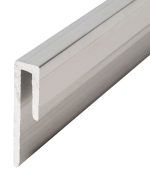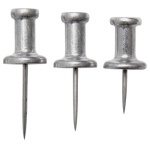if you produce a lot of sawdust and it becomes problematic…
you live in a colder region of the United States…
a sawdust stove may be the solution…
SAWDUST STOVE.pdf (379.8 KB)
Or turn the sawdust into pellets for your pellet stove(s)…
What YOU need and how to make pellets…
To start, you need to have a supply of sawdust at around 10-15% MC to make your pellets form. It cannot be chunks, or sticks. It must be in a sawdust form to be put into the pellet mill.
The largest size entering the Pellet mill should be no larger than small wood shavings, and even that should be reduced whenever possible because the sawdust needs to be pressed through a flat die with small ¼’’/6mm holes to make the wood pellets… Pressing the sawdust through the die holes is what forms the pellets… What you put in the hopper must be small enough to go through the press’s holes…
Bigger pieces need to be run through a hammer mill or a grinder to grind them up into pulp… Hammer mills are the ticket w/ grinders being second choice…
Cardboard, paper and junk mail makes for fine pellets but regular wood sawdust is about as ready as you can get… (suggest you ‘‘sift’’ your sawdust to remove ‘‘chunks’’ and ‘‘pieces’’…
The process…
Moisture
Correct moisture content in your raw material is essential. Depending on how dry your raw material is you may have to add more moisture, or reduce it if the moisture is too high. Each batch is different… Most sawdust pelletizes best at around 10-15% MC… (some wood species bind better at around 20%MC)… A moisture meter is a must till you learn by ‘‘feel’’… trial and error is your best educator…
Binder
You’ll need a ‘‘binder’’ to make the sawdust ‘‘stick’’ together to form the pellets… It also acts like a lubricant during the pelleting process… During pelleting, heat will be generated which seals the binder and sawdust together, causing a hard-shell pellet to form…
You can buy commercial “Wood Pellet Binders”, use steam injection or just plain water to raise the sawdust’s MC…
Mix the binder and sawdust together prior to putting them in the pellet mill… There’s nothing like a motorized mortar or cement mixer for this job…
Heat
You will see steam rise from you mill, don’t be alarmed!!! This is a normal good thing… You do want to “seal in” that loss of heat though… Add more mixture to your pelletizer’s hopper so that it prevents the steam from escaping… This’‘steam’’ will act as a binder also… The pellets produced will come out extremely hot to the touch, like over 180 degrees… You will need to cool and dry them prior to use…
As your pellet mill is producing hard pellets, it will start to bog down… This is actually a good thing… You are now making the best pellets…
Increase your machine’s RPM’s to compensate for this…
Drying
Since most pellet stove like fuel to be around ≤8% moisture you will need to dry them… A simple flatbed w/ open air drying is usually sufficient and your pellets should be ready in a few hours… (unless the RH is at an insufferable index)… A framed 1/8~3/16’’ hardware cloth tray is most excellent… The dryer the pellets are, the more heat that will be produced…
Notes…
Sieve the finished pellets for chafe… Some pieces will fall apart or break during the process… Separate the chafe by sifting them through a screen…
Your drying trays can do this step… Reprocess the chafe…
Resinous/sappy woods sure do make a mess of your equipment and extra maintenance is mandatory…
Cabinetize your drying trays, add a dehumidifier to the cabinet… dry, ready to burn pellets like almost right now… speeds up production too…
Make sure the pellets have cooled before bagging…
Sealed plastic bags are your best bet…



